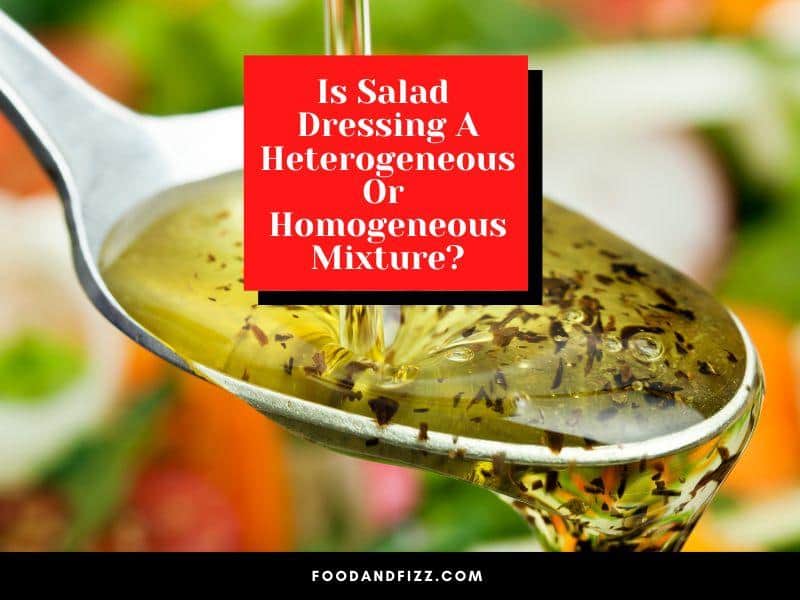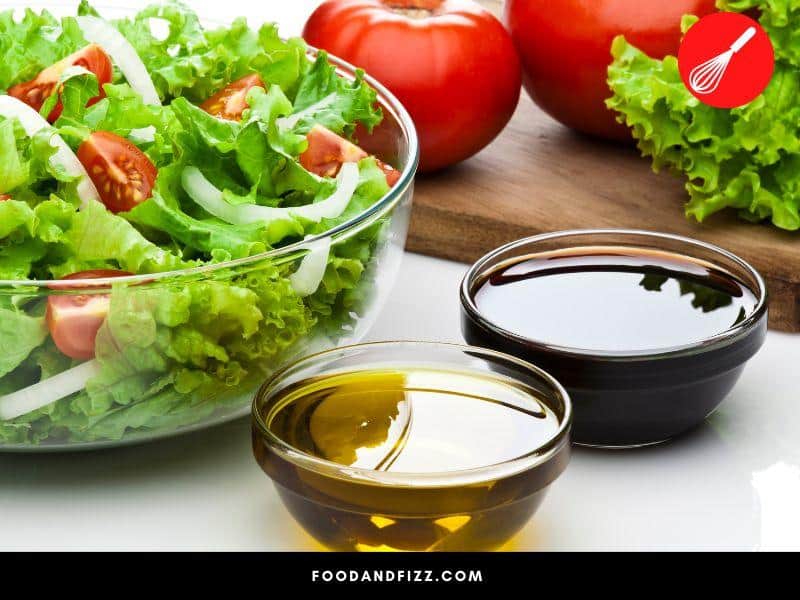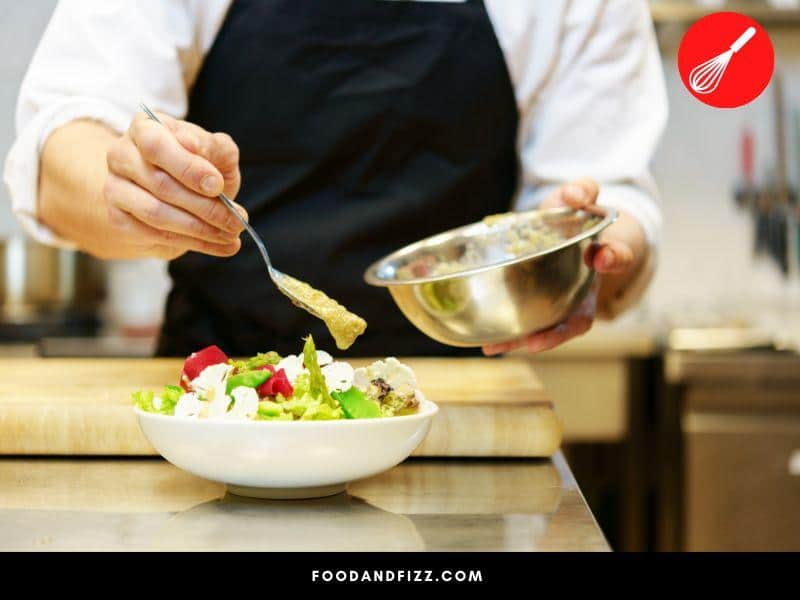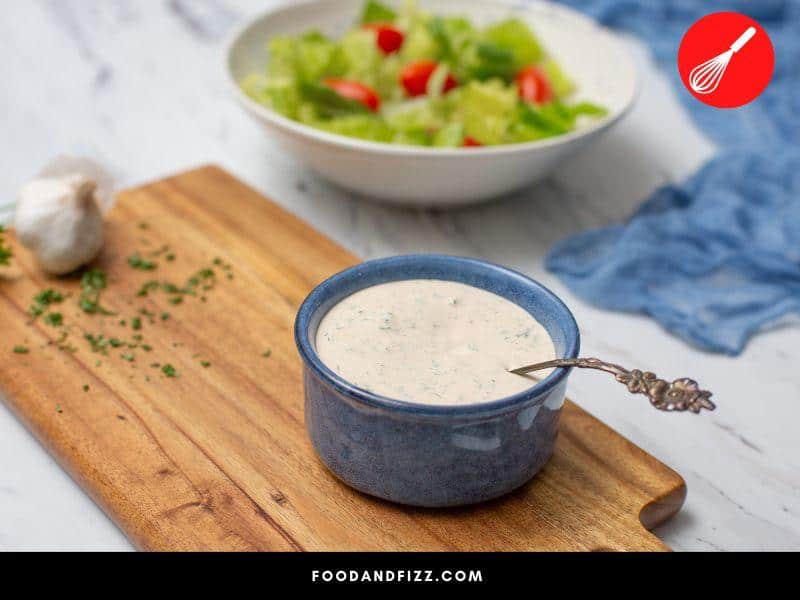Is Salad Dressing A Heterogeneous Or Homogeneous Mixture? Well, I love to devour a bowl of my favorite salad right before a meal. It helps me feel half full to keep track of the proper meal intake for my diet plan.
Isn’t it one of the best ways to stay in shape, feel full, and be healthy?
I believe that the salad itself is an absolute treat. Wouldn’t you agree?
But, to take it with an appetizing salad dressing is what I call an absolute delight.
If you are wondering what actually a ‘salad dressing’ is — it is basically a sauce that adds preferable flavor to your salad and makes it extra yummy and fun!
Salad dressings can be homemade or store-bought. It mainly depends on your taste. These dressings are a mixture of components that go well together and complement each other’s tastes.
There are two types of mixtures, homogeneous and heterogeneous. Both are quite the opposite of each other.
Homogeneous mixture refers to the ‘same’ or ‘uniformed’ ingredients, whereas heterogeneous mixture means the ingredients can appear distinguishable in the mix.
Continue reading because I am not done explaining which of the mixture the salad dressing is actually.
Is Salad Dressing a Heterogeneous or Homogeneous mixture?
Salad dressing is not a homogeneous mixture. You can say that it is quite heterogeneous in nature.

But you must be wondering what makes the dressing heterogeneous, right?
Since different ingredients are involved in the preparation, making the ingredients visually stand out, they make the dressing heterogeneous in nature.
Some Basic Types of Salad Dressings
Since we have already caught up on what ‘salad dressing’ is, it is safe to jump straight into the types.
There are three main types of salad dressing, i.e., vinaigrette, boiled dressing, and creamy dressings.
Here I’m defining these common types quickly.
1. Vinaigrette
Vinaigrette is the most common of the three. The main ingredient is the mixture of salad oil with an acidic component like lemon juice and vinegar. Though, mainly vinegar.
But you don’t have to stop there!
It can be mixed with herbs, spices, pepper, sugar, or other ingredients to give it a little bit more zing.
Not only that. In addition to making an excellent salad dressing, Vinaigrette also makes supreme marinade.

2. Boiled Dressing
It is also known as ‘cooked dressing’. The boiled dressing is a type of creamy dressing that goes back to the 19th century. Known for its German and English origin, it mainly came as a replacement for mayonnaise dressing.
The boiled dressing is made by gently heating it on a low flame. Its main ingredient is the egg yolk which makes its consistency thick, rich, and buttery.
It also typically includes mustard as an ingredient.

3. Creamy Dressing
By its name, you can tell that it is whipped and oleaginous.
The main ingredients include mustard, yogurt, milk, sour milk, buttermilk, salt, pepper, and sugar.
Creamy dressing, for the most part, is mayonnaise-based. It is made by mixing all the ingredients in the bowl. Whisking it until it blends into one buttery mixture of scrumptious delight to the eyes, as well as your mouth.

Home-made Salad Dressing or Store-Bought?
Salad dressing can be homemade. And there are a ton of amazing recipes that you can check out to see which one works best for your palate.
Although, if you are feeling lazy or confused, you can just easily buy all-ready ‘salad dressing’ from the store.
Umm… But should you be buying store-bought or make it from the scratch at home?
I love to have control over what I eat and what I put into my body. I love to select all the ingredients myself and use them to make just perfect enough dressing according to my taste.
Now don’t get me wrong. Store-bought can be yummy too.
Nonetheless, most people prefer salad dressing that is made at home and prepared by them.
But what makes them want to have it homemade? Well, the answer is ‘additive’.
Additives are added to the store-bought salad dressing to keep it fresh and preserve it for a longer period. It helps sustain the texture, taste, and appearance of the dressing. For most, it is not worth it.
Difference Between Homemade Salad and Store-Bought — Which One Would You Prefer?
Just like I talked about now, store-bought salad dressing has additives to preserve its ingredients. Now the difference is that when making it at home, you can look up the recipes and go with the one you love the most.
You can be sure of all the ingredients that you will be adding to your salad. You can have complete control over what goes on and what works best for your taste.
Most people want to be sure of what they are eating and what actually is going into their tummy, so they largely prefer making it at home.
Homemade can help you avoid the amount of salt that is put in. Seasoning can also be according to your preference.
Whereas consuming additives in large amounts consistently can cause health issues. For once, the questionable ingredients can be daunting to move past.
It may be safe if you are consuming it casually. But when you rely mainly on processed food, it can lead to chronic diseases. It may include heart diseases and high blood pressure.
But once in a while, if you wanna try, it is okay and safe to eat the pre-made ones.
Now that you know the advantages and disadvantages, you can decide for yourself.

Conclusion to Is Salad Dressing A Heterogeneous Or Homogeneous Mixture?
In short, salad dressing is a heterogeneous mixture. It can be homemade or store-bought. Both have their benefits.
Whereas people mostly prefer the home made for its fresher taste and control over the recipe. There are different types of dressing that you can check out to see which one you love the most.
Frequently Asked Questions About Is Salad Dressing A Heterogeneous Or Homogeneous Mixture?
How Can You Make the Salad Taste Better?
It vastly depends on the spices and herbs. Experimenting with various herbs and spices and checking which works best for you can help you make your salad taste better for your preference.
Which Herbs Can Help With Both the Flavor and Health of the Salad?
Basil, parsley, chives, thyme, cilantro, mint, or dill can help spice up your salad, as well as make it healthy. These herbs can be yummy in the mixture of salad dressing as well.

